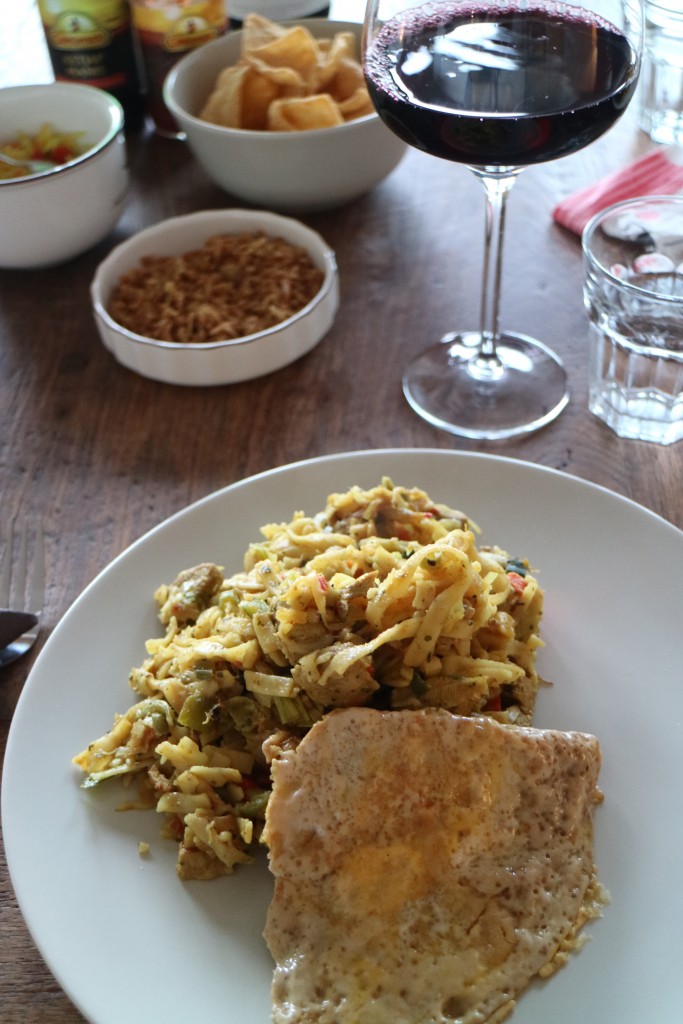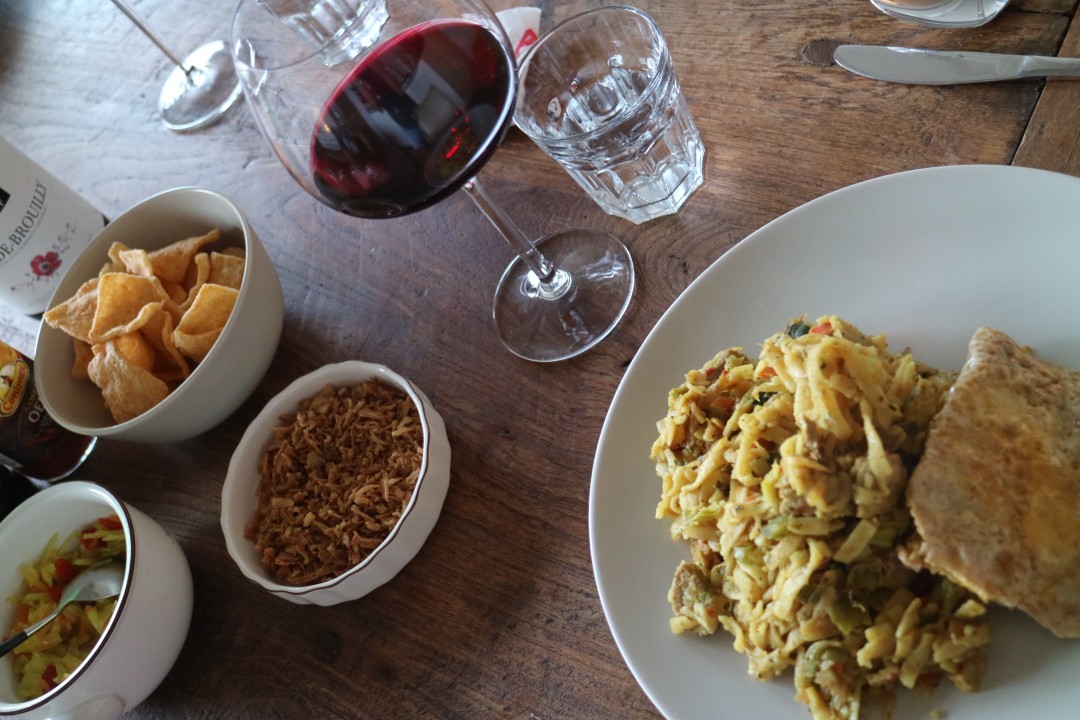From the 17th century till 1945 Indonesia used to be a Dutch colony. Most what happened during those Dutch East India Company-years is not exactly what makes me proud to be Dutch. But the Indonesian-Malaysian food and traditional dishes we added to our Dutch farm-style cuisine is something to be proud of. One of my favourite’s is Bami Goreng. It’s a combined Chinese/Malaysian/Indonesian dish, where ‘Ba’ means in Chinese ‘meat’ and ‘Mi’ means ‘noodles’. ‘Goreng’ is Malaysian for ‘fried’. There are many ways and different methods how to make Bami Goreng. Today I’ll share my recipe with you!

Ingredients
Serves 4
400 gram noodles (‘mie’)
400 gram chicken fillet or pork tenderloin
2 carrots
1 leek
0,5 white cabbage
1 red paprika
1 green paprika
100 gram taugé
1/2 lime (only the juice)
1 onion
3 cloves of garlic
1,5 teaspoons of trassi (fermented shrimp paste)
2 teaspoons sambal oelek
1 teaspoon kurkuma
0,5 teaspoon cumin seeds (grounded)
0,5 teaspoon coriander seeds (grounded)
1 teaspoon ginger powder (or ‘Laos’)
0,5 teaspoon curry powder
0,25 teaspoon chili powder
0,25 teaspoon salt
0,25 teaspoon pepper
wok oil or peanut oil
for serving:
4 eggs
ketjap manis
atjar tjampoer
prawn crackers or crispy onion
optional: satay or peanut sauce
a cold beer
other:
wok or traditional ‘Wadjan’
Method
Cook the noodles, rinse with cold water, drain and keep aside.
Chop up the onion and the garlic finely. Start to sauté the onion over low heat in the wok, with some fresh wok oil. Have some patience, the onion must be soft but now brown. Then add the garlic, trassi, lime juice and sambal.
Cut the chicken or pork (whatever you prefer) in strips (about 2 cm) and sauté in wok oil in the wok until golden brown. Take out the wok and keep aside.
Cut the vegetables (carrot, white cabbage, leek, taugé, paprika) in more or less the same cubes or strips and add to the wok, as well as the dry bami spices (kurkuma, ginger powder, cumin seeds, coriander seeds, curry, and chili powders, salt and pepper), and a dash of water. Let the vegetables simmer/fry for about 5-10 minutes. Then add the meat back again, as well as the noodles. Stir fry for another 5 minutes and the Bami Goreng is ready.
In the meanwhile heat a frying pan. Whisk the eggs, add some ketjap manis and fry the eggs until a thin, fluffy omelet.
Serve the Bami Goreng with the fried ketjap-egg, atjar tampoer (spiced vegetables in sour), sambal, crispy onions or prawn crackers. Optionally you can make a nice satay or peanut sauce with it.
Bami Goreng is the best served with a cold beer. If you don’t like beer then serve a fresh, cold white wine with it, for example a Chenin Blanc or Viognier. Or red wine, like we did – as we felt like red wine. But white wine would have been a better partner.
Bon Appétit!





